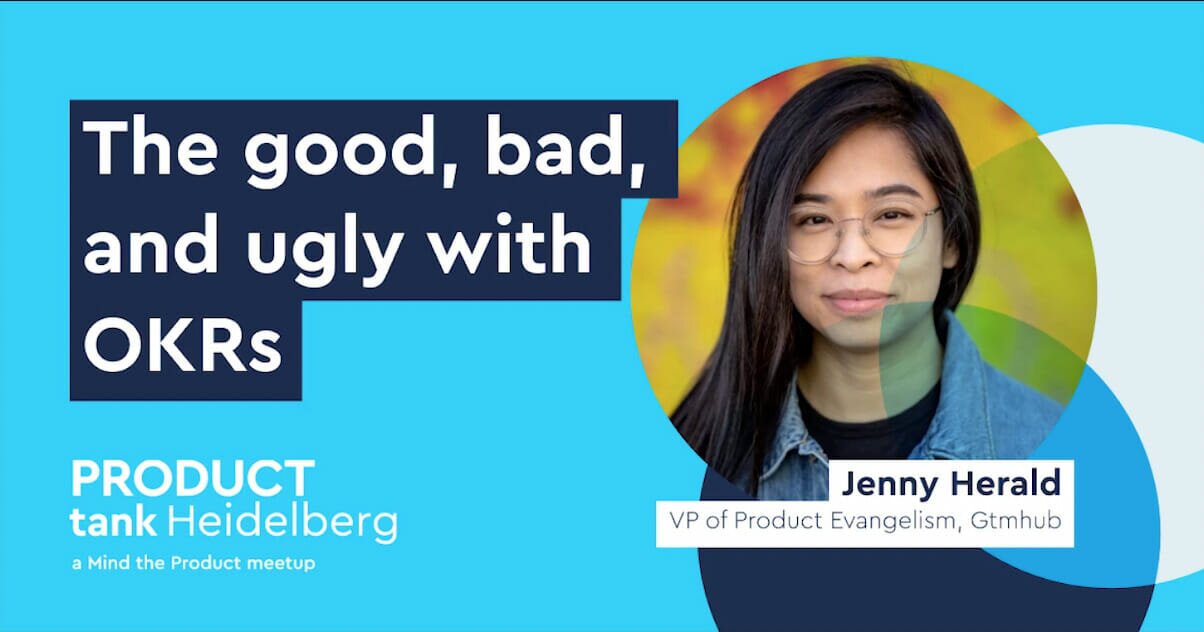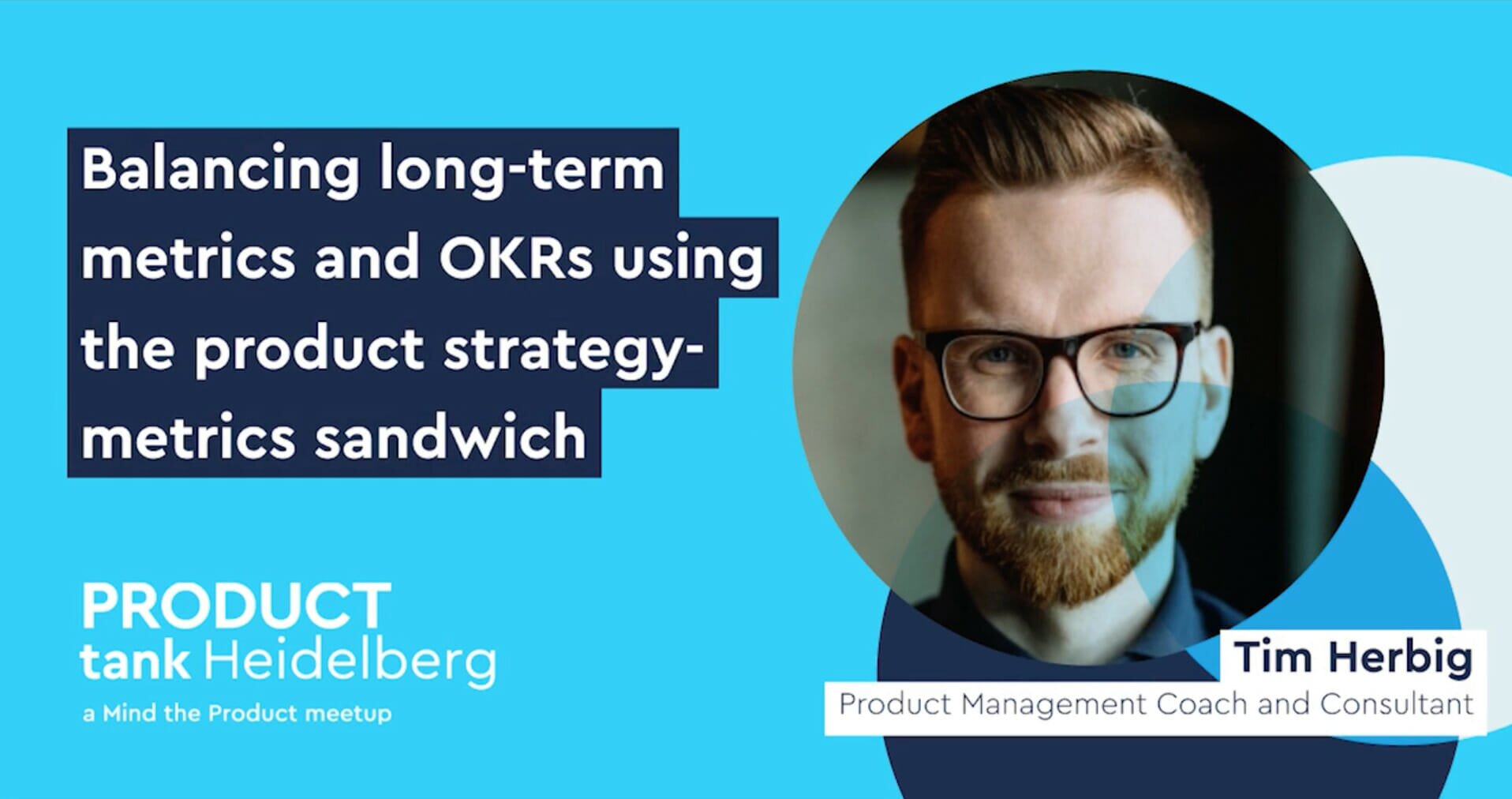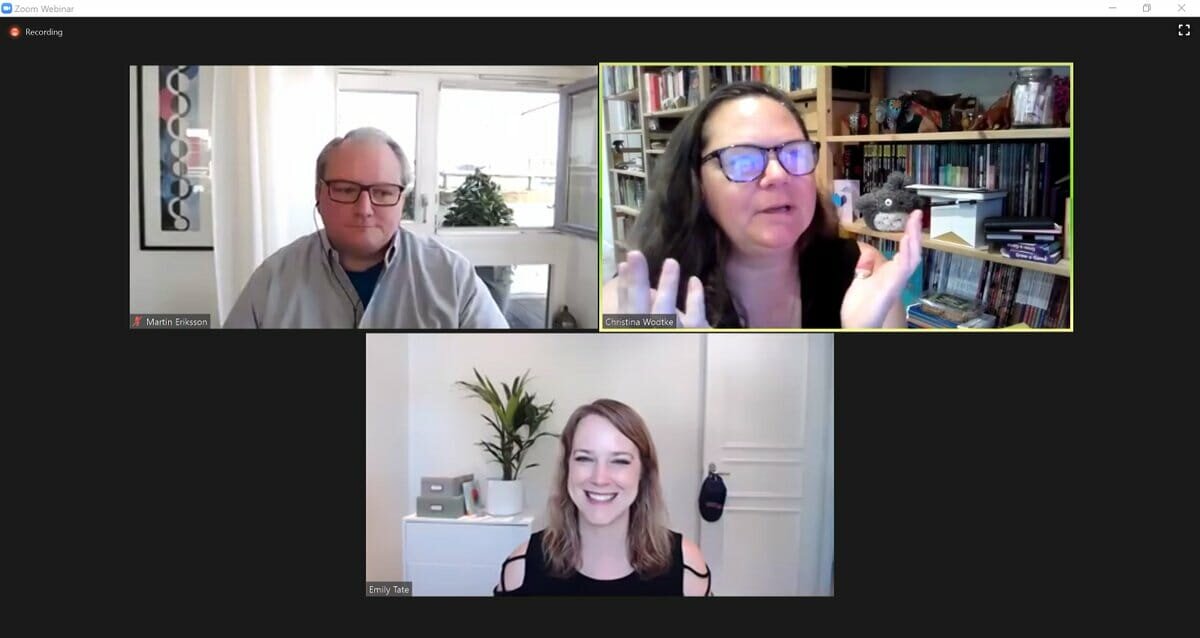With 2022 fast approaching, there’s no better time to have a refocus on OKRs and get ready to start the new year. In this panel discussion for Prioritised members, five OKR and product experts discuss defining your OKRs.
The panel, moderated by our very own Emily Tate, Managing Director at Mind the Product, welcomed:
- Navin Nair, Founder and Chief People Officer at London Product Group
- Pratima Arora, Chief Product Officer at Chainanalysis
- Tim Herbig, Product Management Coach and Consultant
- Christina Wodtke, author of Radical Focus
Watch the entire session in full or read on for a few of our panellists’ key points and tips:
- Building the right foundation for OKRs
- Driving OKRs as a product manager
- Setting the right timeframes
- Measuring OKRs effectively
- Key lessons learned from using OKRs
Building the right foundation for OKRs
The panel kick off the discussion by talking about building a foundation to use OKRs effectively. Christina explains that you need to engrain psychological safety within your organisation for OKRs to work. “You must have people who are willing to take on a huge effort of owning their own direction based on the OKRs you set,” she says, “it’s also really important to have a real strategy of how you’re going to use the framework.”
Sit down and talk through where you are going and what you’re trying to accomplish, Navin says. If you have this succinct view on what you want to achieve, then you’re less likely to choose too many things to focus on when using OKRs. The framework is best used when it focuses on the most important aspect of business goals. Navin adds that it’s important for an organisation to know where it is and what issues customers have. “I’ve seen many organisations go head-strong into OKRs without sitting down and understanding where they are as a business,” he says. Having that context helps you understand what problems you are looking to solve.
Christina explains that once you understand why you’re trying to reach these objectives, you can get teams to brainstorm and create a wide variety of outcomes to reach that objective that you have decided on by asking those questions.
Driving OKRs as a product manager
OKRs is a team sport that product managers are involved in. Figuring out the outcome is key to driving objectives forward and as a product manager, you can gain those insights through the voice of a customer, Pratima believes.
She says to “lead by example and ask the right questions to drive the right outcomes forward”. Really understanding the route of these objectives helps teams to align and move forward.
Bring everyone on the journey when reaching your OKR goals, Pratima says. It can positively impact business culture if everyone is collaborating and working towards that same objective. “Driving OKRs is a lot about alignment and expectations. It needs to be something that everyone has to buy into,” Pratima says.
When linking OKRs between different levels of the company, Christina says to focus on alignment from the top level. Set your objective from the top down. However, this can only happen if every team trusts each other.
Listen to this podcast to find out more about driving OKRs as a product manager: OKRs can be simple – Storm Fagan on The Product Experience
Setting to right timeframes
Asked about the best timeframe to use for OKRs, the cadence is more important than anything, Christina believes. Break your annual business goals into smaller segments and track them over a quarterly period. Focus on 3-4 OKRs for three months and stick with it until you reach it.
However, Pratima mentions that if you’re struggling with an OKR and you realised you’re tracking the wrong objective, then it’s okay to stop halfway through the quarter and track something else.
“OKR cycles should match other business cycles. Align this framework with your other metrics tracking. Whether this is monthly or quarterly, it helps to check-in on all of your frameworks within a similar timeframe, whether these are OKRs, personal development goals, or KPIs” Tim says. The importance is learning with OKRs, Pratima believes. Check-in with these objectives and always note what you learned from your metrics to maximise the value of the framework.
Organisations are always keen to setting too many OKRs in one quarter. “You have the whole year to focus on a plethora of tasks,” Christina says, “you can tackle each one of these with time throughout the year.”
Measuring OKRs effectively
Asked how to track the right OKRs, Navin says to create easily measurable objectives to find success, you can do this by focusing on a specific objective. Keep in mind of your outcomes and priortise those over your output. Feasibility is also key, Navin says, “make sure that these metrics are easy to track. Are you able to easily access these numbers report on them through regular check-ins? Focus on whether it is possible before measuring them and how easy they are to digits.” he says.
Tim encourages teams to be crisp and precise. He also says to articulate the positives to help people connect with the objective. In addition, create meaningful OKRs to avoid tracking vanity metrics. Christina says how she usually gets teams to create as many objectives as they can, stack rank them, and pick their top three.
“Ask yourself what is important for your customers. Once you have that vision you can work backwards from there. Choose those OKRs that are most likely to have the biggest impact on your business goals and move the pin.” Christina says.
Lessons learned from using OKRs
Asked what they have learned from using OKRs, Navin says he now understands that you should reserve your OKRs for strategic initiatives. Be holistic with the success of OKRs and make them work for your organisations’ business goals.
Pratima says that you must have buy-in from your leaders. “You have to make sure that leaders are facilitating and driving this framework. Get that up-front to ensure that everyone cares,” she says.
Go slow, Christina says. We live in a culture of going fast and doing too many things at once. Find a way to take the time and address your objectives. OKRs are hard and you may not get it right the first time but that’s why it’s even more important to regularly review your objectives, focus on your outcomes that will benefit your customers, and most importantly learn together so you can move forward together as a team.
What to read next
Integrating OKRs can be a huge asset to aligning teams and reaching business goals. Mind the Product has plenty of other resources to help you think through how to achieve this. Explore more content with a focus on OKRs, or search more topics in our Content A-Z.
Some of the content referenced above is exclusive to Mind the Product members. Not yet in the club? Learn about Prioritised and MTP Leader membership today.






